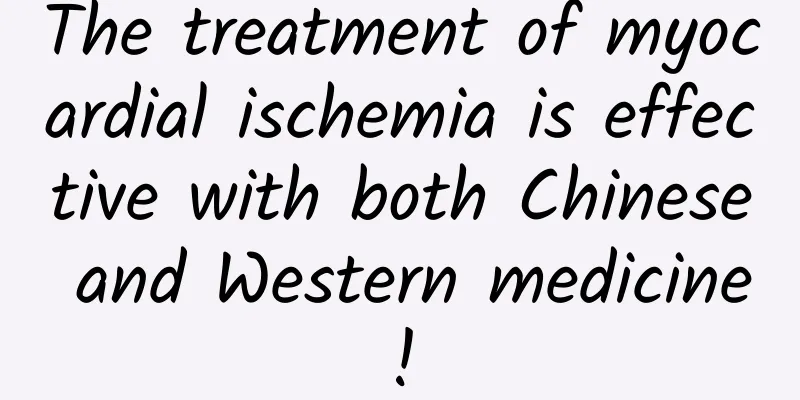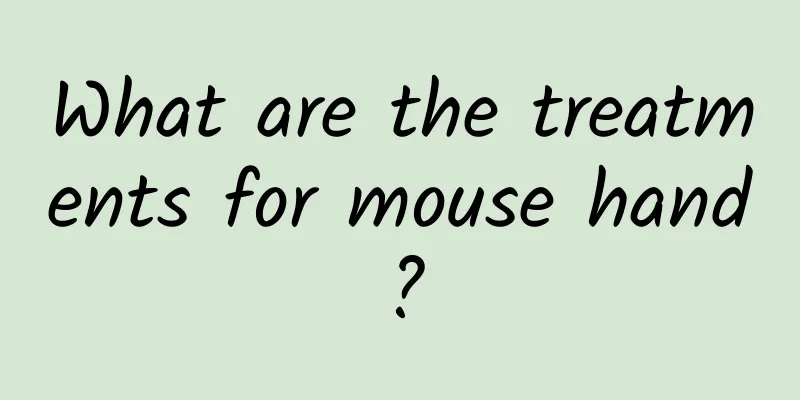The treatment of myocardial ischemia is effective with both Chinese and Western medicine!

|
Suffering from myocardial ischemia is life-threatening at any time and must be treated actively and correctly. At present, drug therapy, interventional therapy and surgical treatment are good treatment methods. The effect will be more obvious if Chinese medicine is administered at the same time. 1. Western medicine treatment of myocardial ischemia Since myocardial ischemia carries the risk of myocardial infarction and sudden death, it should be treated as soon as possible when it is discovered. Actively prevent the occurrence of atherosclerosis. If it has occurred, it should be treated actively to prevent the progression of the lesion and strive to reverse it. Those who have developed complications should receive timely treatment to prevent deterioration and prolong the patient's life. 1. Drug treatment It can be summarized as the ABCDENT scheme: A. Antiplatelet drugs (such as aspirin and clopidogrel) prevent and treat thrombosis and prevent coronary and cerebral artery thromboembolism. B. β-receptor blockers (such as metoprolol or its sustained-release tablets) slow down the heart rate, reduce myocardial oxygen deprivation, and prevent sudden death. C. Calcium antagonists. D. Statins (such as atorvastatin, rosuvastatin, etc.) lower plasma cholesterol, stabilize arterial plaques, and prevent plaques from falling off and forming blood clots. E. RAS system blockers (such as benazepril and valsartan) prevent ventricular remodeling, improve cardiac function, etc. N Nitrate drugs (such as isosorbide mononitrate): dilate coronary arteries and increase myocardial blood supply. T. Thrombolytic drugs dissolve acutely formed blood clots and are used in acute myocardial infarction. 2. Interventional treatment (Percutaneous Coronary Intervention (PCI): Stenting) Coronary artery intervention, or PCI, is a milestone in the history of coronary heart disease treatment in the past 30 years. It is a minimally invasive method that opens the coronary arteries without surgical thoracotomy and without pain to the patient. It has the characteristics of less trauma, quick recovery and short hospitalization time, and is widely accepted by patients. From the early simple balloon angioplasty, to the bare metal stent era, to the current era of drug-coated stents, it has become an important means of treating this disease. Therefore, for patients with typical or unstable symptoms, unsatisfactory drug treatment, and non-invasive examinations indicating myocardial ischemia, coronary angiography and stent implantation are recommended if necessary. 3. Surgical treatment Surgical coronary artery bypass grafting: It can be chosen for patients with complex multivessel disease and unprotected left main trunk disease. 2. TCM Treatment of Myocardial Ischemia 1. Coldness in the heart meridian: [Symptoms] Sudden severe heart pain, aggravated by cold, even chest pain extending to the back, back pain extending to the chest, accompanied by cold body and limbs, cold hands and feet, spontaneous cold sweat, palpitations and shortness of breath, pale tongue, thin white fur, and tight pulse. [Treatment method] Dispel cold, activate blood circulation, relieve numbness and promote yang. 2. Phlegm and turbidity blockage: [Symptoms] Chest tightness and heaviness, pain radiating to shoulders and back, mostly in obese people, accompanied by dizziness, abdominal distension, nausea, poor appetite, palpitations and shortness of breath, pale and fat tongue with teeth marks on the edges, thick and greasy white tongue coating, and stringy or slow pulse. [Treatment method] Clear phlegm and resolve nodules, promote yang and eliminate turbidity. 3. Blood stasis blockage: [Symptoms] Sudden severe heart pain after a fit of rage, the pain is localized, like a needle or a thorn, accompanied by chest tightness and breathlessness, palpitations and shortness of breath, blue lips and dark tongue with ecchymosis, and deep, sluggish and intermittent pulse. [Treatment method] Promote blood circulation, remove blood stasis, dredge meridians and relieve pain. 4. Deficiency of Yin Blood: [Symptoms] Chest discomfort and pain. Dizziness, dry mouth, fever in the five parts of the body, dark urine and dry stools, dark red tongue with little or no coating, thin and rapid pulse or rapid and intermittent pulse. [Treatment method] Nourish yin and blood, activate collaterals and relieve pain. 5. Deficiency of Yang Qi: [Symptoms] Fullness, tightness and pain in the chest, especially when moving, fear of cold and cold limbs, pale face and dark lips, fatigue and weakness. Shortness of breath, spontaneous sweating, pale and fat tongue, white tongue coating, deep, thin and slow pulse, or intermittent pulse. [Treatment method] Warming the Yang and replenishing Qi, activating collaterals and relieving pain. |
<<: What can you eat for allergic purpura? These two types of food are the best choices!
Recommend
Can children eat watermelon when they have a cough?
Children should eat less watermelon when they hav...
Hot compress with coarse salt and ginger to treat lumbar protrusion
Lumbar disc herniation is a common symptom among ...
What causes chest tightness and vomiting?
Many times we feel uncomfortable in our body with...
Can I take a hot spring bath in summer? Can I take a hot spring bath in summer?
Hot springs are a type of water with relatively g...
What are the effects of vitamin E on the skin?
Vitamin E is a nutrient element needed by the hum...
Can I eat white sweet potatoes when I’m pregnant?
White sweet potatoes are a very common ingredient...
Why do women have strong body odor?
Having strong body odor is embarrassing. Xiaoli, ...
What Chinese medicine replenishes qi
In our lives, if we have any disease, when we see...
How long after taking Chinese medicine can I smoke?
Many people have the habit of smoking, mainly bec...
What diseases can Chinese medicine cure? The complementary advantages of traditional Chinese and Western medicine are beneficial to treatment
In life, some people always like to use Western m...
What to do if your feet are severely peeling
Many people experience severe peeling of the feet...
What anti-inflammatory medicine should I take for gum pain
People often have problems with their teeth, such...
How can I prove I'm pregnant?
We all know that women can participate in many ac...
Will drinking honey during breastfeeding reduce milk production?
Becoming a mother is a very happy thing, but new ...
What is a pimple on a man's cervix?
For men, the most torturous thing in the hot summ...









